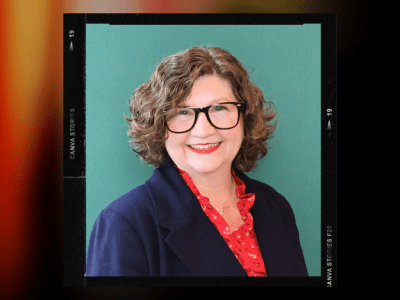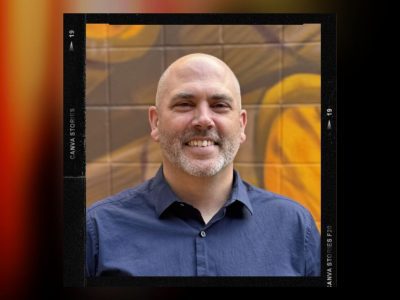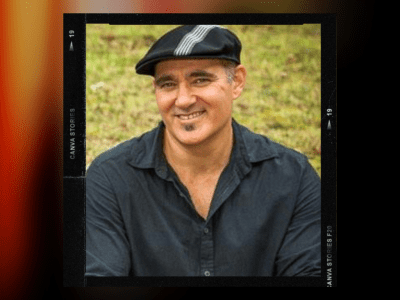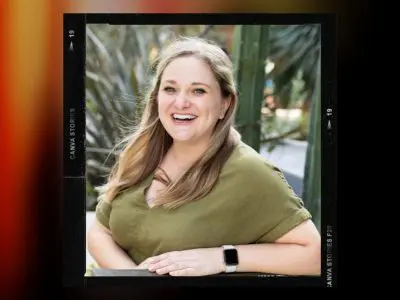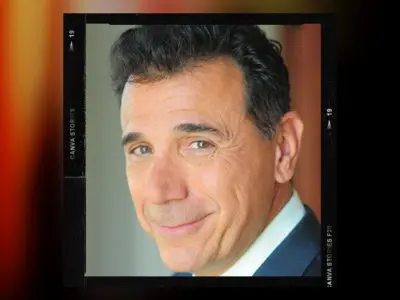Employee Retention
w/ Sandra Kearney
Use the buttons above to listen now.
Transcript - Employee Retention
Rich: On , this episode of team building saves the world.
Sandra: So you’re feeling your airwaves with like all the good that’s going on in the company that makes people feel good.
Rich: What’s the employee side of all of all this?
Sandra: I believe value. They feel, they feel like, oh, this person cares about me and I, I’m not going to leave for a quarter.
Yeah. The higher hops or the higher ups are going through a pretty big learning curve. Right. So your hiring issues, um, start to go away and your retention. And profitability then goes and that’s, what’s all that
Rich: hello team. It’s me, your old friend, Rich Rininsland host of team building saves the world, The show where I speak to the leaders and innovators, the team building industry from all across the globe, trying to find out what about that industry is so important, especially in the world of today. And today we’re looking at the important topic of employee development and coaching up employees with the CEO of human power solutions, Sandra Kearney the first that need to share some love with my supporters of team bonding. If your team is ready to experience teamwork for the power of play, visit team bonding.com to learn more. Now teams join me in welcoming a woman who has made a career assisting corporations to meet. Profitability through holistic success solutions, the CEO of human power solutions to Sandra Kearney
Hello, Sandra. Thank you so much for coming on. How are you today?
Sandra: Well, thanks Rich it’s just great to great to be on and I love the chair dancing. It’s really fun.
Rich: Yeah. Well, I do. I consider myself a professional that was very good. So can we start off please just tell my team, uh, who you are and, and how you got involved with.
Sandra: Sure sure. Uh, I’m Sandy Kearney and I’m the CEO of human power solutions. And we do corporate training and development in a way that is very different from other other corporate training providers. We tailor make our curriculum. We’re not death by PowerPoint, and we’re very much into companies and employees participating in the process and learning from each other and just having us come in and facilitate some really great content.
Rich: So let’s start off right there. First off. Can we explain to everybody what employee development actually?
Sandra: Sure, sure. It’s it’s our, our company, our main goal for our company is in, is improving people’s essential skills are quote unquote soft skills, and it’s helping people develop leadership skills, communication styles.
Being able to resolve conflicts, time management, all the things that are the intangibles that actually increase employee’s engagement in the company, as well as the productivity. So the more skills and tools that they have to use, the better off that the company is going to be. And the longer they employee is going to stay in there in their respective employers, that where their employers, and
Rich: of course the most important prospect. I mean, can you explain to us when an employee decides to leave. What happens to that company thereafter?
Sandra: Well, first of all, it’s really expensive to hire and find and recruit and train and to have someone leave after a year, you are just throwing money out the window. So that’s the first thing off the bat.
When that employee leaves it, it creates a void in wherever, wherever they were, whether they were sweeping the floors or, you know, running, running all the financials. It doesn’t matter where people are in the organization. Anyone that leaves an organization leaves some sort of a void. Where they are. And it also starts to just kind of.
Start to get rid of like the motivation, the morale, everything starts to kind of go down, um, as people are leaving. So obviously some people aren’t the right fit. They’re, you know, right on the wrong bus. Right. That’s normal. But if, but a good people are leaving your company, you got to take a look and see where what’s going on.
Rich: You’re not only just talking about, I have to now find somebody to replace them. You’re talking about the hours of training, you’re talking. I mean, plus you’ve got the, that previous employee had so much skill that they have been bringing to the show and now I have to, I have to wait until the new employee gets up to that level.
So yeah, it can cost like thousands.
Sandra: Yeah. Oh yeah. Yeah. The studies are out there, but not only that it’s the relationships too. Right? So you lose someone and the, and there’s a lot of relationships so our company, we do a lot of processes. We do a lot of that, but we, we focus a lot on employee culture and that engagement and the relationships in our companies and leading authentically and having emotional intelligence, all those buzz words that you’re hearing it’s it is so, so true right now.
What’s happening. The, the leading skill that leaders need right now is empathy and we’re not seeing much of it. Okay.
Rich: So what had we been seeing? Because the idea of keeping your employees isn’t new by any stretch, the map. But of course, along with COVID and then the bailout solutions and so on and so forth that had happened over the past year.
We’re seeing a lot of people who’ve just decided they need to change careers that their career path has gone off on a different direction.
Sandra: Yeah. If you, if you, uh, Google the, uh, the great resignation that’s, what’s happening, people are leaving because they’re finding that they can go somewhere else. They can work remotely.
If they want to choose you’re working remotely, they can, they can have a flexible schedule. Um, there’s no such thing as work-life balance. It’s a work-life blend. We can work and live, you know, and we can kind of blend our lives together, the way that we want to work. I happened to be a quote unquote empty-nester although my grandkids just moved in with me.
So not really, but I am an empty-nester. And so my hours, I like to run my exercise. My peak exercise time is two in the afternoon. I like to exercise in the afternoon, so I might take a couple hours off and then I’ll work until maybe eight o’clock at night, but that’s my preference. Um, if I didn’t work for myself, I don’t know if my.
Would allow me to do that. And that’s the thing that the employers need to be doing. They need to be asking, what’s going to make you most productive. You know, how can we help you? How can we support you instead of trying to, oh, we’re coming back now. So let’s pigeonhole you into, you know, what we’re looking for.
It’s not going to fly anymore.
Rich: Well, what did we see before, before all of this started to change? I mean, what, what were companies doing in the past that you decided needed to be.
Sandra: Yeah. The companies were going into the office, look at the commute, right? The commute that was going on, right. The traffic people are sitting there traveling for training.
Uh, there, even in Boston, before, you know, we would do onsite training all the time. It could never be virtual if it was virtual, it wasn’t working. And you know, so we would go in person. So everyone be traveling from your different locations, they would lose so much time. So much productivity time. Whereas if you could do something effective, interactive doing things online, even your meetings, you know, it, there’s so much technology out there that you can utilize to make it.
So that it’s really interactive. Now I’m not saying that we shouldn’t do things in person a hundred percent. I love doing things in person, but there are times that you, we don’t have to, you can do a leadership training online, virtually very effective. Team-building like what you guys do, not so much. We want to do that in person.
We want to get people together and be playing together and having a good time. So companies should be before they weren’t, they were just saying, this is the way we do it. You can come in. There’s no such thing as hybrid. You can’t work remotely. I don’t care if you’re a mom. I don’t care if you’re caring for your aging parents.
This is the hours. That was what we were seeing before . COVID hits. Okay. Suddenly we’re hearing babies and dogs and you know, everything chaos going on around us and yeah. You know, like what’s all that all about. I remember the last employer I was working for. He was like, you have to work, you know, if you’re going to do anything virtually you have to be in a quiet place and that be any noise behind you.
And, you know, I mean, I got dogs, kids, I mean, kids. And now during COVID, we’ve had a window we’ve been able to open up and become people, right. So even when I’m talking to a CEO now or CHR or VP or anyone, and who I talk to, if I hear a baby, I’m like, bring them my a camera. Let me, let me see that one. You know?
And I think with COVID a lot of bad things happen, but there are some really good things that have come out of COVID.
Rich: So what’s the new methodology. What are you recommending now for clients uh, your clients rather who need to help retain their employees or, or make sure their employees are getting the most, not only out of themselves and you know, for themselves rather, but the most for the company.
Sandra: Listen, ask the question, how you doing and just shut your mouth. You know, and I know that sounds harsh, but that’s what people aren’t doing. They’re not really listening and, or they might be listening, but they’re not hearing. So hear it, process it and have a, have a conversation just because what works for you, Mr. Ms. CEO may or may not work for somebody else, but are they producing? I talked to a young woman who is very, very talented working for an organization in a way. And she was amazing and she left she’s like, I, I had to go, I was told I had to be back in the office. She’s like, I’ve done it for three months.
I don’t, I, why should I have to get up and go to the office when I was doing fine? And she was so people are seeing it.
Rich: I have, but you have that. Let me give you an example. I like my brother. I have an older brother. Who’s a father of four. He’s a fantastic father, fantastic provider for his family his company was bought by a new CEO, new, a new board came in and they said, this is the way your life is going to be.
Now company comes first, then your family, that’s just, if you can’t handle that, you have to go. And that was about a decade ago that that happened. And he seriously sat down with himself and said, I’m a father of four. I can’t afford to suddenly go look for a new job. I have to stay. What are we seeing nowadays?
And, and how, how would you recommend that company changes?
Sandra: So that company is gonna lose a lot of talents because there are other companies out there that are like, I’ll take you father for, and that’s, and that’s what’s happening is the companies that are recognizing that this is actually that this is actually real.
It’s, it’s, it’s a thing. And the talent that’s out there and they’ll lose their people. And the top talent is going to go to other companies.
Rich: So, okay. So what are some steps? What are some processes that, that you can bring to the. Say now that I’m that manager, I’m that CEO. What have you, and I’m noticing that yes, I’m starting to lose people.
Of course. There’s the, there’s the listen that you had mentioned, which is actually, it’s really hilarious. Cause I was just listening to a therapy podcast earlier today. That was all about, don’t be a fixer, be a listener because most people want to do that. When I see that, my significant other, my friends, what have you are hurting?
I want to try to fix it for them instead of just listening to.
Sandra: If you watch, uh, Bernay brown has a really great empathy versus sympathy video. So if you ever Google that, it’s, it’s wonderful. It really shows that people do, you know, want to fix, right. And at least you have this, or at least you have that.
Now it’s, let’s open our ears and just be like, I care. And I’m sorry that you’re going through that. You know, how can I help kind of thing. But one of the things that we really talked to, a lot of our employees about our employers about and what we train in our leadership, what would facilitate.
Leadership sessions is coming together. You know, if you’re using zoom or slack, or if using any of those technologies where you can create different channels. One of the things that we, what we really highly recommend is creating a good news channel. And the good news channel is really so that managers and employees can get some “atta boys!”
To people across the organization. So you, you know, if someone lands a deal or if someone, you know, whatever, it gets a great customer service feedback, whatever it goes in the good news channel. So you’re feeling your airwaves with like all the good that’s going on in the company that makes people feel good.
The second thing is, is opening up a channel at nine o’clock in the morning or eight o’clock in the morning, whatever your start time is, um, you know, for work and having a, uh, You know, a little standup huddle, coffee chat, come and grab coffee. Let’s talk about the weekend. How did the Patriots do? Oh, Tom Brady won again, you know, uh, Pasternak had a beer at the red Sox game and the monster sees, oh, no.
Right. You know, having those kinds of conversations and opening up those. And then opening up a lunch channel and saying, Hey, between 12 and one 30, you know, this channel is going to be open, you know, for lunch. So anyone that’s having lunch that wants to kind of sit around and kind of gab come, come on in.
So it’s, it’s the community, right? So we’re talking about community and then we talk about creating wellness challenges and keeping, keeping in touch with people and making sure that we’re recognizing some signs of people that are not engaged, that used to be engaged and. We help managers kind of see, you know, into kind of what’s going on.
And we’ve got a whole wellness initiative around that for leaders just to help kind of figure out what’s going on with the employees.
Rich: Sandra, this is fantastic. I’m enjoying every moment of this, but I need to take us just a quick second. If you don’t mind, I’m going to step away and tell my team out there about a company I’m very proud to know team.
Team bonding was founded over 20 years ago with one simple question. How can employees have a great time while fostering strong, authentic bonds between people who work together? They’ve created a catalog of innovative events using the power of play as a learning tool and tapping into the correlation of work and play from scavenger hunts to jeopardy and so much more the team bonding of activities with live virtual and hybrid maximizes the impact of team building with an accent on fun. So visit team bonding.com to schedule your next event. Now team bonding when you want seriously fun results. And we’re back with Sandy. Now, Sandy, what are some of these type of processes that you bring to the plate? And more importantly, how do we know?
Sandra: So, you know, we like to do employee surveys, you know, ahead of time with the employee satisfaction. We also look at the retention rates and the hiring rates. So if there, you know, and how long jobs are staying open, because what we really want to measure is you want your company to have a waiting line, to get.
You have to know someone to get in here, be best in class, best in class, in, in culture, best in class, in environment. And that’s really what we strive for. And so we’re measuring, we’re doing tangible measurements on, you know, these different factors. And how long does it take you to hire someone? How many candidates are they viable candidates you have in the pool?
How long do they stay? And that those employee satisfaction surveys are really important too. I think the other thing is we always start off our. All of our training initiatives with doing either predictive index assessments or disc assessments or something like that, because what we like to do is see what the team is comprised of and then be able to tailor the curriculum and what we’re going to deliver to the style of that team.
Rich: Can you give me an example? I mean, is this, is this something we’re seeing largely in the tech field or is this just, you know, finance or marketing or.
Sandra: It’s everywhere. So we have, you know, we’ve got everything from transportation companies to home healthcare, to CPA firms, you name it. So it’s all across the board.
And I think, you know, we’re, we’re all in the businesses team bonding ourselves. It’s the people business. People are people, right? And that’s, that’s the other thing that we really try to drive home just because someone’s a CEO doesn’t mean that they don’t get up in the morning, take a shower, walk their dog.
Right. We all do the same thing in the morning. And that’s something that we really try to drive home. One of our clients was an, I have a couple of owners. They’re wonderful, great people. And they started going through trainings and then realize, Hey, we’re not seeing our employees. So now one of the owners has committed to each week going to each site and talking to each and every one of the employees and I was like, that’s great. Cause you’re leading by example. Now your manager’s going to follow suit and have those one to ones and take some time to get to know your employees. And I think in the hospitality, the transportation, all that whole arena, where you have a very ethnic blend of people, it’s very diverse.
A lot of times people that don’t speak English, just kind of come in and get their stuff and they go, and we’re really working with the managers to, you know, use a universal language eye contacted body language is showing that you care taking a few minutes to, you know, listen carefully, you know, as they’re trying to communicate with you.
And that’s really what it’s all about right now.
Rich: How do we get there? Like what’s some of the development that you actually do have people practice?
Sandra: So we do, we do, we have coaching, we kind of coaching forms. We have questions that we give to our managers, especially the new ones that aren’t used to doing this.
We give them, you know, kind of tips and tools and ways that they can communicate. We make sure that they have follow-up. You know, follow up dates for meetings. We kind of, we set schedules of, you know, at first you’re going to have to follow this, but then it’s going to become habit and you’re not going to need any of this anymore.
So our goal is to get them set up with the processes. We’re going to do the nine o’clock meeting. These are the things that we’re going to talk about. You know, these are, these are the subjects that we’re going to bring out. We’re going to do one-to-one coaching with each one of our employees every month.
And these are the questions that we’re going to have. We’re going to teach our people how to set goals, even if you’re driving or if you’re a home health aid, or if you’re a CPA, how you, everybody should have goals. So we teach them how to set goals with their employees and then how to hold them accountable.
So the whole thing is about growing coaching, mentoring, and the difference between coaching and mentoring. Kind of moving the employees along so that their companies get everybody gets lifted up.
Rich: Right, right. I was going to say, what is it? What’s the employee side of all of them.
Sandra: I believe value. They feel, they feel like, oh, this person cares about me and I, I’m not going to leave for a quarter or an extra a thousand dollars.
The grass isn’t going to be greener because people don’t leave companies because of the money they leave it because of the culture or the management. Um, a lot of times if you’re making very, if you’re not making a lot of money, um, but you’re happy and you feel valued. You know, you make it work. So then I think employees really feel like it’s, if they’re being invested in and cared about, that’s huge.
Rich: What can an employee do for themselves with this thinking along these same lines? Because it’s, it’s easy nowadays for an employee just to look online and say, how do I know my corporate culture for this company is not a good one but what can they do to help with the changes that need to be made?
Sandra: So it’s all on self-leadership. So leaders don’t need to have a title, right? So we do, when we do employee training, we talk about that, you know, if you be the change that you want to see, so if you are, if you’re a Debbie downer or a chronic complainer, You know, do that at home, do whatever you need to do. But when it comes to the workplace, if you want to build a culture of community and caring, you got to stop complaining and you know, so we, and have a peer to peer partners, or sometimes we’ll talk about having an accountability, buddy, you know, and we’ll assign people like you, you’re going to commit to.
Alright. I complain all the time. I always, you know, I complain about whatever you name it. Well, this is your buddy and every time you do that, they’re going to call you out on it. So kind of creating that sense of where peer to peer we’re here to help each other. We all want the same thing. And it’s just having those accountability partners is, is a really big thing.
And, and the employee can set goals for themselves just like you would, if you want to lose weight or just like, if you want to go back to school, right. Set a goal for yourself and set a plan.
Rich: I’ll be quite honest with you. My career field was not the corporate life. I mean, anytime I was involved in a corporate culture at all was because it was a secondary job that just helped me afford my career of being a performer.
If you have somebody though, who’s in that job, who’s in that lifestyle, what should they be looking for?
Sandra: They should be looking for, uh, as far as, as far as a company, what do you,
Rich: in terms of a positive corporate culture for them?
Sandra: Yeah, they, they, they have to first look inside themselves and what feeds. Right. Okay. So I’ll give you an example.
My daughter is 23 and she was working in social work and she decided to go work for a very large financial company, which we all know, and she’s like, I’m going to go sell myself to tech. I’m going to sell my soul to the corporate culture. And, you know, I said, I don’t. Yeah. I’m not sure about this because you’re going to be sitting at a desk and you’re going to be like, it’s nine to five at the desk. Right. And she has got, she went and at first it’s nine to five and then she called me the other day and she said, mom, once I get through my 90 day probation, I can pick my shifts. And so she said, and I can apply for overtime. And so she’s like, I can do my 5:30 AM to 1:00 PM and I could still have my day to do everything I want.
And you can now start going back into the office. She gets fed by people. So to be by herself, in her. That doesn’t feed her. Right. So, so I think it’s for me the last four days, I haven’t had a car I’ve been stranded and I’ve been by myself and I’m like client, like climbing the walls. I am. They just see people.
I mean, I love zoom it’s not the same. Right. And I was stranded somewhere that wasn’t in my home. So I got home yesterday and I’m like, ha, my kids or grandkids are here. Like my friends are down the street and it, it lifts up your mood. So I think people have got to look at what kind of culture feeds them. If they’re a work hard culture, they want, if they want that structure and they want, Hey, I want to know exactly what I’m going to be doing every single day.
Look at that. If you need flexibility and you know, you need to have autonomous. Ask around check glass door, you know, check the reviews of the company before you go, go on, go on LinkedIn and connect with people that are actually working at that company that you’re looking at and see if you can connect with them and just chat with them.
So do your research before you head out into what you think is greener pastures, because a lot of times it’s not.
Rich: Now, if you don’t mind, I’m going to get a little personal here, thinking of team building and getting a company like the one I’m a part of involved with a corporation. What kind of benefits do they actually.
’cause I’ll tell you looking back on live events, you know, before the pandemic even occurred, you always get that initial. As people are walking in the door, the eye roll, the exasperated sigh of, oh, it’s another one of these. Why is a company like the one I’m a part of and proud to be a so important in corporate culture?
Sandra: It’s so important. I love the eye roll cause you know what? You guys are awesome at the end. Oh my God. That went by so fast. That was so fun. We’re done already. I love the eye roll. Bring it on. No, what happens is, as long as you have fun, Right. So you can, we personally, our company doesn’t, we don’t do eight hour training unless it’s team building, because that’s that interactive.
But everything else for us is broken up into two to three hours segments once a week, over time. So we don’t come in and do four days in a row of 32 hours of leadership, four days in a row. It doesn’t stick. So developing the curriculum and developing the, the schedule so that you have a little snippet.
That go down, you know, throughout the year. So it’s the ongoing training and development. That’s what helps to really transform an organization. Um, so that’s number one. The biggest benefit they have is retention and employees that are experiencing, like with team bonding. If they ha they go through an experience together.
Right there. Like, remember that experience? Yeah. Last week I did a retreat for a client. And so we did, we went to a beautiful place in New Hampshire was gorgeous and I sent them all out to do a walk and talk and then like each in pairs and go out five minutes. One person talks about whatever you want for five minute.
The next person, five minutes. See what you can learn about somebody in five minutes. So they all went out and they walked the beautiful grounds. It was gorgeous. They all come back in 10 minutes and I’m like, where’d you learn that? Oh my goodness. We learned so much. I’m like, how long did it take you? And they were like 10 minutes.
Like, it doesn’t take that long. So I challenged them. I said, you know, cows lunch have coffee. Do that exercise for 10 minutes, get to know your people. So, so you get comradery, you get shared experiences, you get retention, people are talking about how great they love working, where they’re working, how much they’re cared about.
So that attracts that attracts, uh, other employees, other professionals that want to come into that company. So your hiring issues start to go away and your retention is. And profitability then goes and that’s what it’s all about.
Rich: Do you see any other benefits for the company besides just keeping your employees involved
Sandra: or your customers?
Yeah. Well, if you have happy employees that translates to your customers, your customer loyalty, the whole thing. I mean, there’s studies about that. You know, when you go to a restaurant and everyone is just the micromanage and there, I used to work in hospitality and people are miserable. Like there’s, you know, you can tell and you go to a restaurant and people are happy.
Hey honey, you know, let me see, let me help you. I’ll take your order, you know, and having a good time. You know, it’s, it’s a good culture. Same thing. If you go into a bank, grocery store, whatever it is, you can tell the vibe of a company by how happy and engaged their employees are.
Rich: So by the, the, the other flip of the coin would be that if your employees are not happy, then you have something to work on.
Yes. Say I’m a manager who is thinking about, maybe this is something my company needs. What should I be looking for? And, uh, and we’re not talking about part of the mass Exodus of employees, but especially in a world today where, where we’re still, I mean, how many percentage of, of employers are still online versus, uh, some sort of hybrid?
What do I need to be looking for to show that the culture is not working for my employees and that I need to improvments.
Sandra: You can look at people that aren’t doing anything extra. They’re just doing what they’re told they have to do. You can be looking at repeat orders from customers. You can be looking at your, you know, coming complaints.
You have what you, Google reviews are. Those are definitely things that you want to take a look at, you know, really how many, how much sick time. How much vacation time is being used. And that could be good and bad, right? So someone’s taking all their vacation time. It’s because they want, they want to take advantage of it.
If someone’s using none, that’s a flag as well. Cause they’re afraid they might be afraid to take time off. So there, so really it’s, it’s looking at that. And then I think for the owners, you need to be looking at your managers, what tools have you equipped your managers with? Because have you promoted them from being, you know, W, you know, whatever.
Right. So whatever they’re great. So let’s elevate you to management. What did you do to equip them to help, to manage a team? And that’s, those are things that you have to look at.
Rich: What kinds of things should they be looking for?
Sandra: They should be looking for managers that people want to come in and work, and they are excited to come into work managers that know their employees as people and the managers that don’t give you.
Aren’t giving you just lip service. Okay. There’s a lots of people that know exactly what to say. You know, like you come in and you’re like, how could I help you today? It’s so not sincere. Right? You can hear it. Let’s drift back. Right. You know, versus, you know, how can I help you? Same words. And it’s, it’s what that communication looks like.
If there’s a lot of backdoor communication, if you hear at meetings, you know, if you kind of had that little group of people in the back that are just kinda like, there’s lots of signs that you can see and you can feel I’m sorry, but you can feel a toxic environment and you can feel, you can feel it when employees aren’t fully engaged and hybrid rises and virtually.
Right there on their computers. The servers are on looking at their productivity and not everything’s about productivity, but you know, when you call them, are they answering their phone? How are they answering their phone? And just asking a question is a family. Okay.
Rich: Are we seeing any benefits for the higher-ups as well with this?
Sandra: Yeah, the higher hops or the higher-ups are going through a pretty big learning curve,
Rich: right.
Sandra: They really are. There are the, the, uh, the executives are, as companies are losing people and they’re losing good people. They’ve had to really take a, they’ve had to take a step back and do some evaluations. Those ones that were hard liners that we could not, we could never do remote work and we could never work, you know, outside the office or now.
Wow, we can, there are some though that are, that are not learning their lesson and they’ll learn it because they’re not going to, you know, either a, they won’t be around because the company’s gonna go under or be there and lose a lot of their people. And they’re going to have a little bit of a revolt, but higher ups are also, I think, because of mental health awareness and everything else, everything is being kind of brought to light.
Um, they’re becoming more human and becoming more. A lot of them are becoming more accessible.
Rich: Okay. I hope that I hope that’s true. Yeah. Good, good, good. Cause I was going to say, I mean, we we’ve been dealing with the great resignation for months now. Are we starting to see a change in that? Is there, is there any sign that it’s either slowing or.
Sandra: No, I don’t see that right now because everything’s so up in the air and no one has really figured out this back to work thing. Uh, so you know, we’re doing a lot of workshops on back, you know, back to work and how to navigate this ever changing environment. So
Rich: tell us, be so hard because we don’t even know we’re not even getting positivity from either the state local or federal governments as to what we need to do to maintain.
Sandra: Yeah. Yeah. We were having this conversation about the mass mandates, which is fine, you know, but there was one, there was one city that had a mass mandate. They had to wear masks inside, except if you’re getting your hair done and I’m thinking to myself, but you’re breathing on the hairdresser.
Rich: That is a weirdly specific incident
Sandra: so that’s it. Right. So now going back to office in may, we saw, we heard going back to the office is going to be, you know, We don’t wear your mask as long as you’re vaccinated, blah, blah, blah. Right. But now the back to offices, oh, you can, we’re coming back to the office, but now you have to wear masks that in and of itself changes the culture of a company doors are close because people don’t want to wear their masks.
So then you have closed doors versus open doors. The whole, the whole thing, it changes everything.
Rich: Let’s try to wrap up here. Sandy was something a little more positive that we can leave people with. What are you seeing as the most positive outcome of all of this? Even if we’re talking about a year
Sandra: from now or two, I think the human, the human is of at all the connections that people are making and that they’re that the levels of communication and how much open discussion we’re having as you know, Is probably going to be the most positive outcome.
Rich: Do you think corporations are going to get up there? They’re going to be built more on empathy and sympathy than they are on just the bottom line and putting the, you know, the nose to the grindstone.
Sandra: You know, those companies that do build a company on that are going to have huge,
Rich: excellent ladies and gentlemen, one more time, give a big round of applause for Sandy.
that’s actually a small group of people. I’m going to keep trapped under my desk just to applaud to you, Sandy, but I take good care of them and I know all their names, so that’s important, but Sandy, real quick, before we actually move on here, can you tell everybody where they can find you? If they’re looking.
Sandra: Sure our website is, uh, H power solutions, uh, dot com and it’s S Kearney, K E R N E y@hpowersolutions.com. And our number is 6 1 7 5 7 5 9 9 5 9. And follow me on LinkedIn because I’m very interesting to follow on LinkedIn.
Rich: Excellent. Thank you. I actually just started doing that with you today.
Sandra: My motorcycle posts you’ll love
Rich: you do have some very fascinating articles on your LinkedIn.
Oh, but Sandy, I, as much as I have enjoyed this, I was telling you in the beginning before we started that, unfortunately I got to kind of put you on the hot seat here. Okay. Because it is tough. From a speed round.
all right. Once again, the way this works is you’re going to have 60 seconds to answer. It’s just a bunch of really silly questions. The most silly questions that I can possibly ask you. The objective is you want to actually come up with the shortest answers to. Something, you know, that just the right off the top of your head, if you’re feeling competitive at all, the number to beat is going to be 13.
So if you can get through 13 answers, you’re going to tie. So if you go for 14, that’s when you’re going to win. All right. All right. If you are ready once we hear the music. I’ll ask you the first question and away we go, what’s your name
Sandra: Sandy
Rich: How many kids do you have?
Sandra: Three
Rich: Which one is your favorite?
Sandra: Lucas
Rich: Oh, I’m getting answers. That’s amazing. Um, if you could have dinner with anyone from history, who would it be?
Sandra: Mother Thersea
Rich: wonderful, uh, named one choice that you regret
Sandra: getting married.
Rich: Okay. Uh, what is your favorite children’s book?
Sandra: The giving tree.
Rich: Excellent. Would you call yourself a leader or a follower?
Sandra: A leader,
Rich: How many pets. Do you own ?
Sandra: One
Rich: dog or cat?
Sandra: Dog
Rich: Who would you like to see play you in the movie of your life?
Sandra: Sandra Bullock
Rich: excellent. What’s the most courageous thing you’ve ever done?
Sandra: Tye Dye
Rich: If you could live in a different state, what would it be?
Sandra: Oregon
Rich: What living person, other than family members, you admire the most
Sandra: Kim Kardashians.
Rich: I’ll give it to you, even though that’s a shameful answer. No, I’m just kidding.
Well done. Well done. Are you ready for this? Andy? Are you ready?
13, you tie, you tied for our top of the season, which means you have beat groups of people in this game. So, excellent job. Thank you. Thank you. One more time, Sandy Kearney for coming on it, it meant the world to me to have you actually here being part of this conversation. And we hope to hear from you again, as things continue on to see how well things have turned.
Sandra: No, thank you so much for having me. I really do appreciate the opportunity.
Rich: Thanks. And thank you my friends. One more time. That’s it. We’ve reached the end of another episode of team building saves the world. If you have enjoyed this show and want to hear more things like this, please feel free to find us on teen bonding.com/podcast.
Or you can find us on Spotify, Google podcasts, wherever you find your favorite podcasts. We are there, there are, uh, so many different types of social media. team bond podcast. So just look for us there. And if you guys leave a message, I’m actually still looking for messages that I can replay and talk about right here on the show.
So maybe you could be the first one to get that. So my friends, if you’ve enjoyed the show, please. Whether you’re brand new or you’ve been a longtime fan, tell your friends, tell everyone, you know, we would love for you, you to be able to share the information we’ve shared with you today, but until next time, one at all, always remember that no matter where you are, if you’re within the sound of my voice, you’re on my team now.
And I am forever going to be on yours. You take care of each other, my friends, and I’ll see you next time.
It’s been said that you learn more about a person in an hour of play than in a year of conversation. So why not put your coworkers to play with the help of the team at team bonding team bonding was founded over 20 years ago with a one center. How can employees have a great time while fostering strong, authentic bonds between people who’ve worked together?
Their catalog of innovative events include scavenger hunt, jeopardy, and much more. Each activity whether live virtual or hybrid, maximizes the impact of team building with an accent on fun. Visit team bonding.com to schedule your event now, team bonding. When you want seriously fun results.
October 4, 2021
Flexibility and empathy are keys to creating a positive environment where employees want to stay.
Sandra Kearney of Human Power Solutions talks to Rich about leaders needing empathy in order to retain their employees. Keeping yourself accessible, valuing your employees, and listening can go a long way when it comes to employee retention. By creating a connected community with your team it will drive a healthy workplace culture. Happy employees translates to your customers, your customer loyalty, and the long-term success of your organization.
Sandra Kearney is a seasoned sales and management professional with small business owner experience in a variety of industries. Her early career was based in the service/hospitality industry, including Marriott International and Brinker International (Chili’s), where she received world-class training and gained valuable skills, experience, and knowledge of business processes and effectiveness. Sandy was always promoted quickly to higher responsibilities, working in leadership positions in the areas of Marketing, Management, Employee Relations, and Customer Service.
She earned her Personal Training Certification in 2006 and discovered her ultimate passion in helping people achieve greater results physically, mentally, and in every area of life. Sandy purchased New Life Health and Wellness, a fitness center, in 2008. Prior to the purchase, the fitness center was doing poorly with only 88 members. She applied her sales, marketing, and process improvement skills and doubled the membership each year, growing quickly to over 500 members. Sandy also added staff, independent contractors, several services, and new programs, resulting in additional revenue gains. She completed her goal in 2015 by selling the business at a healthy profit.
Sandy has spent the last 5 years in the Learning and Development space. She launched her own firm, Human Power Solutions in December of 2019. It has been an immediate success due to her network and focus on client experience. Sandy’s ability to network, serve others and connect people is a large part of her success. Covid-19 has brought some new challenges but also exciting opportunities in the networking world.
Sandy earned her Master’s in Organizational Leadership from Nichols College in 2018 and has a BS in Chemistry from Assumption University. She lives in Westborough, MA, is the mother of three kids, 2 grandchildren, and has five siblings.
" People don't leave companies because of the money they leave it because of the culture or the management."- Sandra
Get more human resources and leadership advice.
Less drama? Greater teamwork and job satisfaction? TeamBonding is here to help you build a stronger and happier team. Subscribe to get our team building podcast and thought leadership blogs sent straight to your inbox.





